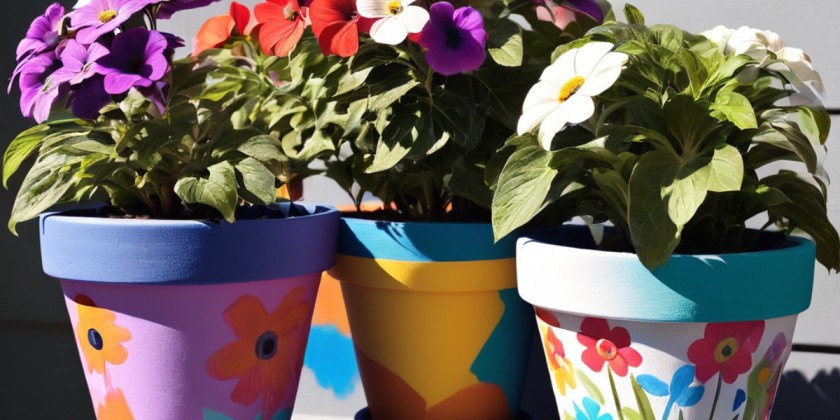Monstera deliciosa, also known as the “Swiss cheese plant,” is a popular tropical houseplant known for its unique, fenestrated leaves. Originating from Central America’s rainforests, it has a climbing vine growth habit, connecting itself to trees or other structures. It can be potted and trained to climb or allowed to cascade gracefully indoors.
Monstera deliciosa is known for its aesthetic appeal and ease of care. It thrives in bright, indirect light and can accept lower light conditions, making it a versatile choice for indoor environments. Care involves straightforward watering practices, ensuring the top inch of soil is dry to prevent overwatering and root rot.
Monstera deliciosa contributes to improved indoor air quality and can be reproduced from stem cuttings. Its fruit is edible and known for its sweet, pineapple-like flavor, but caution is advised as other plant parts can be toxic if ingested.
Varicolored cultivars, such as the ‘Thai Constellation’ and ‘Albo Variegata’, offer attractive white or yellow streaks in their leaves. Monstera deliciosa is a valuable houseplant that adds tropical allure to any indoor space.
The Swiss cheese plant, Monstera, encompasses various species with unusual characteristics. These species include:
How to Grow Monstera adansonii
Monstera deliciosa: Cited for its comparatively larger leaves than Monstera adansonii, this species is a classic favourite among plant lovers.
Monstera borsigiana: This interpretation denotes a more diminutive and rapidly growing form of Monstera deliciosa, making it a popular choice for those aspiring to a more consolidated Swiss cheese plant.
obliqua: A rare species closely reaching Monstera adansonii, but with more delicate leaves embellished with more complicated patterns of holes, adding a striking touch to the Swiss cheese plant family.
How to Take Care of Swiss Cheese Plant
The Monstera deliciosa, generally known as the Swiss cheese plant, intrinsically climbs, utilizing aerial roots advancing from the stem to find help in the environment or nearby establishments. In its aboriginal habitat, this demeanour allows it to ascend adjacent trees or woody vines.
When developing it as a houseplant, simulating this evolution pattern can be accomplished by positioning a stake in the centre of its pot to enable upward maturation.
Primary care obligations for this plant pivot around uniform watering and sound nutrition. Periodic upkeep pruning may also be essential to manage its size and shape.
In terms of light, the Swiss cheese plant, owing to its equatorial origins, helps from bright but avoiding sunlight. It’s conditioned to blossom beneath the canopies of large trees in the jungle, and its leaves can suffer from sunburn if uncovered to disproportionate direct sunlight. If immediate sun exposure is inescapable, confining it to two to three hours in the morning is advisable.
Also Read: How to Grow Pink Princess Philodendron
How to Monstera adansonii care
For soil, Monstera deliciosa thrives in a peat-based potting compound that retains moisture without pushing waterlogging. Preserving a soil pH between 5.5 and 7 is facilitative to robust development.
Water management is required, with the plant choosing invariant dampness without becoming waterlogged. To decide when to water, about an inch into the soil; if it feels almost dry, it’s time for watering. Confirm that water flows through the pot’s drainage dilemmas during irrigation.
The Swiss cheese plant must hold the right temperature and humidity levels. Given its jungle origins, it succeeds in high humidity and warm temperatures. To simulate its realistic conditions, keep the plant above 40 degrees Fahrenheit, protecting it from drafts. Ideally, preserve humidity levels above 50 per cent. Arranging the plant in a warm, well-lit bathroom is an immaculate choice.
Augment humidity by misting the plant or using a humidifier nearby if necessary. Concerning fertilization, wait at least four to six months after potting or repotting the plant, as the potting mix typically includes slow-release fertilizer. Afterwards, apply a monthly regimen of an all-purpose liquid fertilizer, diluted by half, to sustain your Swiss cheese plant.
How to Grow Swiss Cheese Plant From Seed
Expanding a Swiss cheese plant from seeds concerns several steps. First, place the seeds in a surface tray with a moistened seed-starting mix. Gently cover the bases with the growing medium. Use plastic wrap to create a moist environment, and arrange the tray in a warm area with indirect sunlight. Regularly mist the ever-increasing medium to harbour light moisture.
Expect germination in a few weeks. Once the seeds sprout, extract the plastic wrap while maintaining the growing medium moderately moist. Within a few months, the seedlings will be ready for transplantation.
When potting and repotting a Swiss cheese plant, opt for a receptacle with satisfactory drainage holes, and swinging baskets are an appealing option for these plants. Select a case slightly larger than its root ball when repotting a nursery plant, guaranteeing it remains at the same depth as in its original container. Employ a peat-based potting mix. Consider repotting every two years, locomoting the plant to a negligibly more significant receptacle with fresh potting mix.
Also Read: 18 Indoor Plants with Big Leaves
Bound is the ideal season for these potting and repotting activities.
Swiss cheese plants may face everyday houseplant pests like mealybugs, spider mites, scale, and whiteflies, but these problems are commonly non-lethal and can be regulated with non-toxic insecticides or neem oil. In addition to pests, watch out for distinct plant diseases such as root rot, rust, powdery mildew, and blight.
While Swiss cheese plants are usually trouble-free when their environmental needs are met, several shared issues can arise if their conditions must be adequately addressed. Overwatering is often the culprit when leaves turn yellow. Provide the plant’s soil isn’t invariably waterlogged and permit it to somewhat dry between waterings. Black marks on the leaves are expressive of leaf burn resulting from disproportionate direct sunlight orientation. Observe the plant throughout the day to avoid lengthy exposure to direct sun and extreme afternoon sunlight to
control this.
Propagating Swiss Cheese Plant
The most explicit method for reproducing a Swiss cheese plant is stem cuttings, which supply a cost-effective instrument for cultivating new plants and putting the extracted stems from pruning to productive use. Spring is the optimal time for propagation, and the process is as follows:
1. Cut a 4- to 6-inch area of the stem, securing your cut just outside a leaf node, maintaining the node itself untouched. Clear any leaves from the lower third to half of the cutting.
2. Involve rooting hormone in the cut end to enable root evolution.
3. Plant the cutting in a small receptacle with drainage holes plugged with a dampened soilless potting mix.
4. Arrange the receptacle in a warm establishment with bright, indirect light.
5. Preserve the growing medium’s light moisture. After a few months, the cutting should have originated well-formed roots, which you can transfer to a larger pot.
FAQ’s
1. What is the most suitable time to reproduce a Swiss cheese plant through stem cuttings?
The ideal time for propagation is in the bound when the plant is vigorously developing.
2. How lengthy should the stem cutting be for thriving propagation?
A stem cutting of about 4 to 6 inches is suggested for thriving propagation.
3. What is a leaf node, and why is it essential in cutting?
A leaf node is a smallish bump or nub on the stem where leaves and roots can grow. Cutting just after a leaf node is essential because this is where new origins will begin.
4. Why should I extract leaves from the inferior portion of the cutting?
Dragging leaves from the lower part of the cutting enables the direction of the plant’s energy toward root expansion. It also decreases the risk of rot.
5. Are there any standard issues or challenges to observe during the propagation procedure?
While Swiss cheese plant propagation is usually specific, watch for problems like overwatering, breakdown, or fungal maturing and take measurements to deter them.











